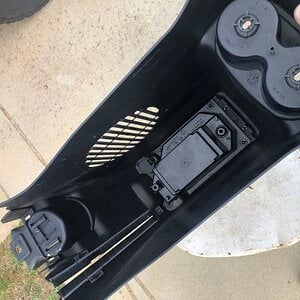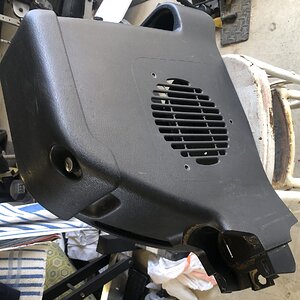Believe me, there's no thunder to steal when telling something you know and someone might not. They likely have something they know and you don't as well //content.invisioncic.com/y282845/emoticons/smile.gif.1ebc41e1811405b213edfc4622c41e27.gif
I'll do my best to make this make sense, so to help make it clearer, I'll use analogies:
Let's assume that you know what resonant frequency is already, but if not, the theoretical definition is where an input is 360 degrees in phase with the output. In electrical circuits, it's where the circuit has zero imaginary parts, aka, where the stuff talked about previously with inductance and capacitance cancels out to just leave no imaginary numbers. Since that might be a bit hairy if you don't study electronics, let me do my best to explain this with an example that is oft used in physics: a child's swing. When learning to swing by yourself by "pushing" with your legs, you initially end up with poor results because you are trying far too hard to get the swing to go higher. This is because the swing works like a simple pendulum, whose length determines the resonant frequency, and at said resonant frequency, energy is stored in the form of the swing's motion. When you push at the resonant frequency of the swing, your pushing (INPUT) is in phase with the movement of the swing (OUTPUT). Again, if you push improperly, you'll end up just wasting your own energy and the swing won't change its arc.
The longer the chain on the swing, the lower the resonant frquency, or the slower you need to push to gain amplitude. The same applies to a speaker enclosure, the larger the box, the lower the resonant frequency of the box, and since the lower frequencies more often coincide with the values where your audio information is for your subwoofer, you end up having to deal with impedance rise there.
Thiele or Small, I can't remember which, once stated that any speaker system can be described as a high pass filter. If you model the system as such, there is going to be a natural frequency to the circuit close to which smaller and smaller amounts of input are needed to create the same amount of output, because again, your input is in phase with the output. In circuits, this is where the imaginary parts of the impedance cancel out. I really wish I could write out what I'm trying to display in terms of variables, but I don't have math type here so that might be difficult.
So, if you model your sub system as a high pass filter, using pretty elementary electrical theory, you can determine the SYSTEM's resonant frequency (governed by an equation which I don't know since I don't have any reference books here as I just moved into a new apartment lol). I don't know the formula for using the high pass model for a speaker, but the general electronic circuit formula is w=1/sqrt(L*C) where w is your frequency in radians, or (2*pi)*(frequency in hz), and L and C are obviously the system's inductance and capacitance respectively.
Now, since impedance is made of complex numbers AND resistance, when the complex numbers cancel out, resonance will therefore be merely resistance, and since resistance is not frequency dependent, the impedance therefore at the resonant frequency will be at where the circuit's impedance is at a minimum. Since there is no impedance to damp the circuit at the resonant frequency, the oscillations can get out of control and become what is called unbounded. So, when your particular subs are causing vibrations in your particular box in phase with the entire system's resonant frequency, the impedance of the entire SYSTEM will be at a mininum.
Your SPEAKERS, however, will not have a minimum impedance, rather the frequency at which the system is resonant is going to cause an increase in the speakers' impedance, which is taking into account the imaginary parts we've been talking about before. It's a relationship which is sort of hairy and is honestly a bit shady myself to understand since I'm still learning as well, but I'm trying my best here. Your inductance is related inversely related to the change in current through the inductor, and at your resonant frequency, this change will be at a minimum, and this will thus raise the inductance of the circuit, and conversely increase the impedance at that frequency. At frequencies on either side, however, it slopes off strongly.
I'm really trying hard to make this make sense, but I'm struggling here, and I already feel that I lost you, PLUS, it's not yet clear enough to me either to make simplifications without worrying whether or not they're entirely valid. With that said, I'll let someone with a bit more experience come in here and try and clarify what I've started. //content.invisioncic.com/y282845/emoticons/smile.gif.1ebc41e1811405b213edfc4622c41e27.gif


